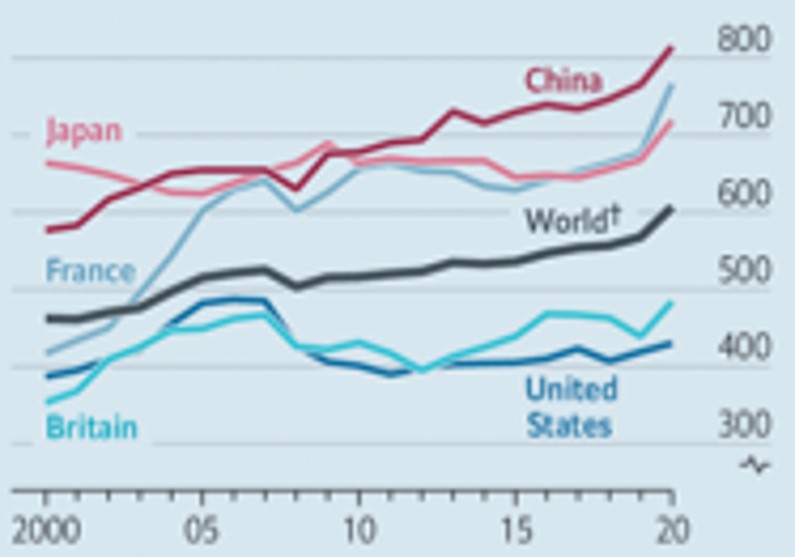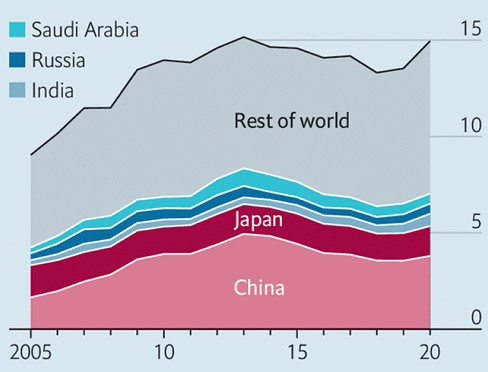Following a sharp rise in inflation precipitated initially by the supply-side disruption as the pandemic ended and supply lagged demand, then the Russian invasion of Ukraine, central banks are tightening policy. The US Federal Reserve is at the forefront of this charge, raising interest rates at the fastest pace since the 1980s.
There is no doubting the determination of central banks to curb inflation to low single digits by raising interest rates to levels not seen since before the financial crisis of 2007. And that is despite the risk of financial market instability.
The Fed, the Bank of England and others have been ‘behind the curve’, which is to say that they should have tightened monetary policy before the supply-side pressures began to build but now that inflation has reared its ugly head, they are determined to get it back under control.
But let’s not kid ourselves. Interest rates take up to two years to have their full effect, which occurs through slowing the economy and reducing demand. In year-on-year terms, price inflation will fall sharply next year simply because the sharp increases in energy prices and grain prices, which pushed it up after the Ukraine invasion in February, are not likely to occur.
Higher interest rates are here to stay
Hence, there will be a significant price inflation fall in 2023, but higher rates are still required to ensure that it drops back to a low level beyond that, which means that, at best central banks will not start to ease rates until the back end of 2023 or possibly the first half of 2024.
The challenge is to do that without causing severe financial market disruption. The good news is that reform instituted since the global financial crisis, ensures that big institutions that are systemically important to the financial system do not blow up and require rescuing.
But, as the experience of the Bank of England in having to intervene in the UK bond market after the big leveraged position of pension funds got exposed by the sharp rise in bond yields following the unfunded tax cuts on September 23rd shows, there is still plenty of room for financial market disruption.
This is a seismic development, and it’s an undoing of the last 14 years of extraordinarily loose monetary policy returning interest rates – not necessarily to pre-crisis averages – but certainly to significantly higher levels than seen in the previous decade.
The implications for financial markets are enormous. The unwinding of many trades dependent on extraordinarily low-interest rates and a loose monetary stance could wreak further volatility. The withdrawal of central bank liquidity via quantitative tightening – the sale of previously held government paper bought from the private sector – will have the effect of reorganising the way markets have positioned themselves. This liquidity gusher will now be turned off and reversed.
A big shakeout is inevitable
That will undoubtedly lead to much lower market pricing as this liquidity is withdrawn and the risk positions are reappraised. Hence, it’s no surprise that equity markets are down about 20% this year and bond markets by a similar magnitude. Junk bond yields have jumped sharply, and leveraged positions are at risk from market volatility. Indeed, such is the risk of market disruption, central banks will stand ready to provide emergency support as a last resort to smooth out wrinkles as market positioning adjusts to the new reality.
There could be a big shakeout of so-called zombie companies, which have existed because extraordinarily low-interest rates meant that they were able to service their debts even with poor profitability. Those firms will be exposed to sharply higher official interest rates, resulting in more corporate failures. On the other hand, it also means more investment opportunities for funds looking for higher returns in an environment of dislocation.
However, it’s got to be good news that some sanity will be restored to overvalued markets. It will surely make them more sustainable and resilient in the medium term. Asset prices will be based on fundamental underlying prospect growth and decent returns. There will still be opportunities for funds to seek better returns, given higher yields.
A new monetary and fiscal policy paradigm is emerging…
This has enormous implications for fiscal policymakers because it will lead to sharply slower economic growth in the short term and recession in some countries, such as the UK. As tax revenues fall and spending pressures increase, they will have a choice: allow fiscal policy to tighten or loosen it. Most will assume they will relax policy; otherwise, voters will be sure to replace them.
So, we’ll have a tight monetary stance and a fiscal loose policy stance in the years ahead. That will represent a big challenge for governments who may want to embark on a program of tax cuts, for example, as that’s revenue foregone. Spending increases will be required to soften the transition of policy because the effects of the tight monetary stance are bound to harm the most vulnerable in society as the economy weakens. The economic implications of tight money are clear: potential recession, higher unemployment, and a period of significantly weaker economic growth.
…with fiscal and monetary policy heavily influenced by an ageing population
But an ageing population may come to the rescue. Because of that ageing, there is a shortage of critical workers. Hence a focus on skills, apprenticeships, and retraining programs will mean that the high levels of unemployment associated with previous slowdowns can be avoided. But only if more workers are retrained for the jobs for which there are shortages. It will require public funding and probably plenty of it for the institutions providing these skills and training.
However, an ageing population also implies increased fiscal spending on housing, care homes and hospitals. A potential loss of tax revenue owing to fewer workers will likely increase the burden on the public sector.

Opportunities for global markets
One effect of the global population ageing underway is a global savings glut. There are still insufficient investment opportunities to mop up the rise in the worldwide pool of funds so that financial markets will remain underpinned. That will underpin valuations or limit the fall. But that still assumes that global markets remain open, allowing funds to flow freely (ish) around the world financial markets.


Extraordinarily, it may still mean that negative interest rates (where rates of interest hover below price inflation even when it comes down) could persist or will not return to the positive real yields seen before 2007/8.
But that does not mean a significant realignment will not occur. It will. Transitioning from a period of cheap funding to one of more expensive funding will have consequences for those in financial markets who have taken excessive bets that interest rates would remain near zero. Some will not be able to survive or compete in an environment where funding is no longer free and easily accessible.
For households and businesses, it means the cost of borrowing will be higher than it has been for the last 14 years, and that is something that they may find hard to get used to because some may never have been in a situation such as the one that they are about to face. A rise in loan defaults and bankruptcy is coming.
We must prepare for yet another generational change – this time in inflation and monetary and fiscal policy – the latest in a series of unfolding shocks that have occurred since 2007/8.

